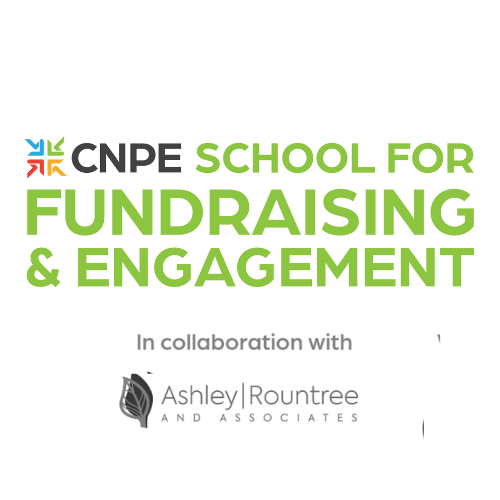Online Fundraising: Proven Methods to Increase Even More Funds for Your Nonprofit
Online Fundraising: Proven Methods to Increase Even More Funds for Your Nonprofit
Blog Article
The Function of Neighborhood Engagement in Nonprofit Fundraising: Structure Lasting Relationships for Lasting Support
Area engagement is increasingly identified as a crucial component of successful not-for-profit fundraising. By cultivating authentic connections with regional stakeholders, organizations can cultivate count on and loyalty, which are necessary for lasting assistance. However, the approaches and strategies used to involve neighborhoods vary widely, elevating essential questions about performance and effect. What are the finest practices for cultivating these vital links, and just how can nonprofits determine their success in this arena? Comprehending these dynamics could substantially influence the future of fundraising initiatives and the total goal of nonprofit organizations.
Recognizing Community Interaction
Community interaction is an important component of effective nonprofit fundraising efforts. Nonprofits should determine key stakeholders-- such as neighborhood members, regional companies, and various other organizations-- to develop reliable engagement methods.
Reliable community involvement is based on active listening and responsiveness to the requirements and interests of the neighborhood. This process entails getting responses, recognizing neighborhood characteristics, and making certain that the organization's goal lines up with regional priorities. Engaging the area can take various forms, consisting of public meetings, volunteer chances, and collaboration initiatives, each created to motivate involvement and investment in the organization's goals.
Additionally, community involvement must be come close to as a continuous dialogue instead of an one-time effort. By fostering a comprehensive atmosphere where area voices are heard and valued, nonprofits can construct a solid foundation for future fundraising endeavors. Eventually, a deep understanding of community interaction encourages organizations to create authentic links that enhance their overall efficiency and sustainability.
Advantages of Solid Relationships
Solid connections developed through neighborhood engagement return countless benefits for not-for-profit fundraising efforts. First and leading, these connections foster depend on and reliability, essential components in motivating contributors to contribute. When prospective advocates see a not-for-profit proactively associated with their neighborhood, they are extra most likely to count on its goal and influence.

Furthermore, these connections promote reliable interaction. Nonprofits can utilize their connections to share stories of impact, updates, and requires, making certain that fans continue to be informed and engaged. This open line of communication not just reinforces bonds but additionally urges referral promo, expanding the not-for-profit's reach.
Finally, solid community connections can draw in new partners and enrollers. Businesses and people are a lot more inclined to align with organizations that demonstrate purposeful community participation, giving additional resources and support that can considerably enhance fundraising capacities. Therefore, growing durable connections through neighborhood interaction is integral to a not-for-profit's long-lasting fundraising success.
Approaches for Efficient Engagement
Just how can nonprofits properly involve their communities to improve fundraising efforts? Normal updates, engaging material, and calls-to-action can galvanize community passion discover this and participation.
Second, organizing community occasions, such as workshops, volunteer opportunities, or fundraising drives, promotes face-to-face communication, enabling nonprofits to showcase their influence and efforts. These occasions not only elevate funds but also grow connections and enable community participants to engage directly with the reason.
Third, carrying out individualized communication methods can boost interaction. Customizing messages to particular benefactor sectors based on passions and previous payments promotes a feeling of belonging and financial investment in the organization's objective.
Lastly, developing collaborations with regional businesses and community leaders can enhance outreach initiatives. Collective campaigns can improve presence and credibility, demonstrating a cumulative dedication to the neighborhood's wellness. By integrating these methods, nonprofits can develop long-term relationships that enhance fundraising efforts and drive lasting assistance.
Determining Involvement Success
While involving the area is essential for successful nonprofit fundraising, measuring the effectiveness of these involvement initiatives is similarly vital. Establishing clear metrics allows organizations to assess how well they are connecting with their target market and accomplishing their fundraising goals. Secret performance indications (KPIs) such as donor retention prices, volunteer participation levels, and interaction on social media platforms provide concrete information for analysis.

Frequently examining these metrics makes it possible for organizations to pivot their techniques when required, making certain that area involvement remains straightened with their general mission. Additionally, sharing these outcomes with stakeholders fosters openness and builds trust fund, motivating additional community involvement. Eventually, a robust measurement framework not just educates future fundraising campaigns however additionally reinforces the relationship between the not-for-profit and its advocates, laying the foundation for sustainable success.
Instance Studies in Area Effect
Various study show the profound effect that community engagement can have on nonprofit fundraising success. One remarkable example is the "Something to chew on" campaign, where a regional food financial institution partnered with companies and colleges to host neighborhood suppers. These events not only raised funds but also cultivated a feeling of belonging amongst participants, significantly enhancing benefactor retention prices.
One more compelling instance is the "Green Spaces Project," which included local residents in the revitalization check these guys out of city parks. This campaign not only amassed monetary assistance from regional services yet additionally grew a volunteer base that added to ongoing maintenance and shows. The feeling of possession and satisfaction amongst neighborhood participants translated into sustained payments.
In the realm of arts, the "Art for All" campaign efficiently involved local musicians and customers to create joint art setups, leading to enhanced exposure additional resources and contributions for a neighborhood arts nonprofit.
These instances highlight that when nonprofits prioritize neighborhood involvement, they can develop lasting connections that improve fundraising efforts, making sure lasting assistance and fostering a vivid area society. Such cases demonstrate that area interaction is not merely a method but a crucial column of nonprofit success.
Conclusion
In verdict, neighborhood involvement is essential to the success of not-for-profit fundraising initiatives. Eventually, a durable foundation of area assistance not only enhances fundraising prospective but also cultivates a culture of collaboration, important for attaining long-term organizational goals and sustaining purposeful impact. fundraising consultant.
Nonprofits have to recognize key stakeholders-- such as community participants, local services, and other organizations-- to create reliable involvement strategies.

In conclusion, neighborhood interaction is important to the success of nonprofit fundraising efforts.
Report this page